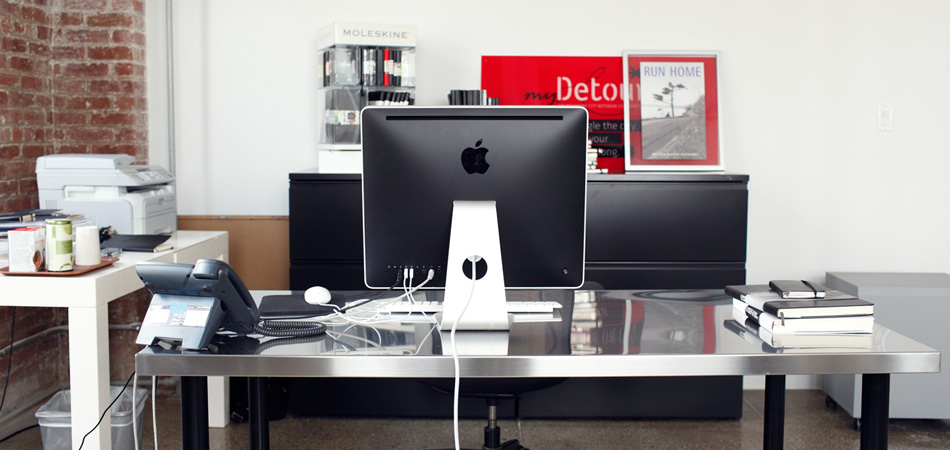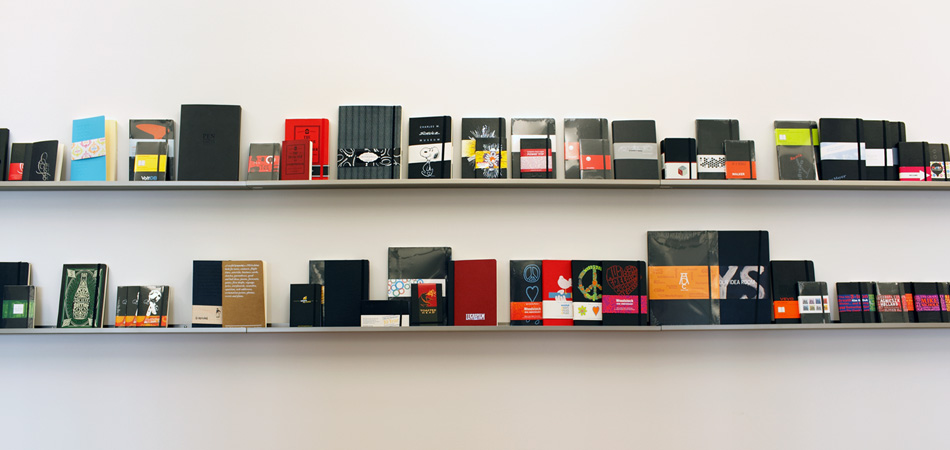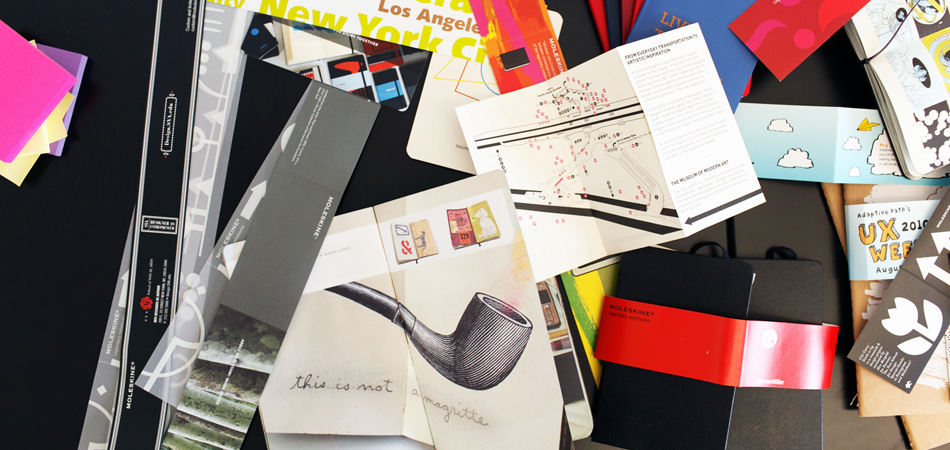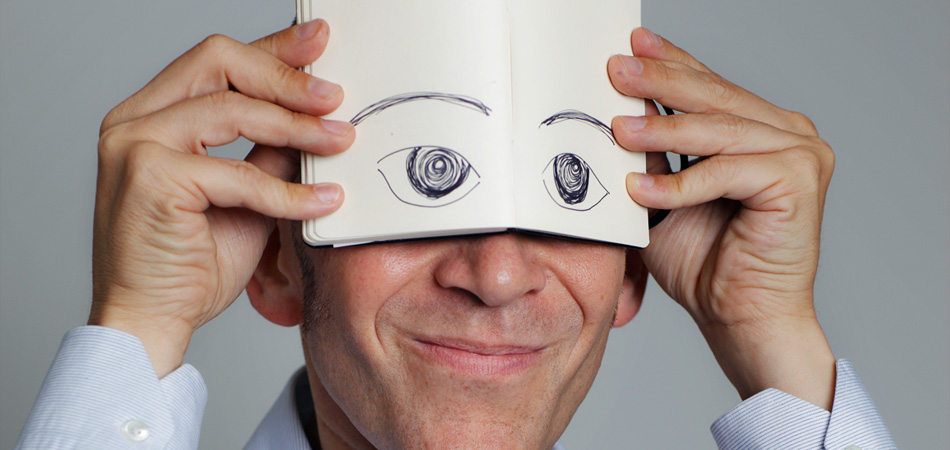Marco Beghin: More Than Just Paper
Moleskine has become one of the most visible paper and notepad brands out there today. An opportunity to speak with Marco Beghin meant getting to the bottom of how a paper brand can co-exist and succeed in an increasingly digital world.

One doesn’t have to look far to hear talk of the dwindling “print” industry and most things analog. Our shift in the last few years towards a “paper-less” lifestyle with our iPads, e-readers and mobile phones stoked my inquisitive mind. How were traditional paper-based brands adapting? While reading’s future is seemingly cemented on a digital format, the age-old documentation of both serious and casual thoughts seems to be a little slower to adapt to a new electronic landscape. I can attest to this, my use of note-taking software such as Evernote really didn’t catch on for me when the convenience and ability to format size, color and boldness all came with the flick of a wirst; all the tools which lay before me with a simple pad and paper. It is this convenience, this authenticity and this intimacy that has become among the important factors that go into Moleskine’s continued success. Moleskine has become one of the most visible paper and notepad brands out there today. Finding itself into the repertoire of the lifestyles of many, an opportunity to speak with Marco Beghin meant getting to the bottom of how a paper brand can co-exist and succeed in an increasingly digital world.
Interview: Eugene Kan
Photography: Adam Krause

The history of the modern day Moleskine brand only dates back within the last 15 years. When re-creating the product we see now, what sort of elements needed to be considered?
When we set out to re-introduce Moleskine to the creative community, we wanted the contemporary brand to connect with a sense of nomdadism while encompassing the creative spirit of today. We felt artists and professionals needed a medium that would replicate the ease of technology, but would also offer a simplicity and agility of use. To us, the blank canvas found in a Moleskine notebook really spoke to the needs of that sort of avant garde, creative class.
In reviving the little black notebook for today’s creative and professional sects, we wanted to maintain the simplicity and openness of Chatwin’s era, while creating a product that reflected the lifestyle of the contemporary Moleskine user. In order to suit those 21st century needs, we re-created the notebook preserving the form-function design that made it the perfect platform for personal expression. We also infused a few modern elements, offering notebooks in new colors, models, and sizes that would appeal to different users. But one of the most important elements was ensuring the preservation of the iconic little black notebook’s legacy as a creative companion for the world’s artists, writers, and professionals.
Was the Moleskine of today, largely un-changed from the past and did you have any archival references?
The revival of the Moleskine brand really began in 1997 when Modo & Modo, a Milanese publisher harnessed the Moleskine design and introduced the Moleskine® trademark. As Moleskine was re-created for the contemporary user, we wanted to maintain all of the qualities that really opened up the power of the creative process. We preserved characteristics like the rounded edges, elastic band, and expandable inner pocket because we felt they add an intimacy that transforms a notebook into a true creative companion.
How many steps go into producing a typical piece from Moleskine?
The steps vary because with each project we serve a unique purpose. When we work on a new idea, we look at trends to find companies whose values align with the Moleskine brand and whose communication needs present a creative challenge for us.
Once we have a new project in our minds, we move on to concept development and discussion about the actual content of the project. We focus on how to best communicate our message while creating a product that is perfectly suited for its purpose. After we’ve answered those questions, we can make decisions about the aesthetic qualities like the materials and packaging. Then once we have a completed product, we really spend the time figuring out how to incorporate the product digitally and engage our online community.

There are several iconic parts to a Moleskine such as the cover, the ribbon and the internal folder. But is there room to create a modern-day Moleskine with new features that are perhaps more suited for somebody in the 21st century versus the 19th century?
Yes, because we want the contemporary Moleskine user to experience the same connection to Moleskine that our ancestors have experienced for centuries. In the last few years, we’ve started creating a range of new products like our volants and cahiers that we offer in a rainbow of colors, sizes, and paper types. We’ve also created new collections like the Folio line for professionals and the Passions collection for lovers of film, music, books, wellness, wine, and recipes.
We’ve also found some exciting ways to adapt for the 21st century in the use of Moleskine as a technological companion. By partnering with products like the Kindle and introducing the Moleskine cover for Kindle, we’ve discovered innovative ways to assist the hectic lifestyle of the 21st century creative set.
When creating new product, how much of it is based off of fulfilling the needs of the user versus creating a more meaningful and efficient platform for users?
It’s really a delicate balance of both. We want to meet the needs of the end user without compromising the integrity of the Moleskine brand and products. We would never create a product that doesn’t meet the artistic standards and quality of design that Moleskine values.
How does the creative process for Moleskine work and how do your New York and Milan offices come into play?
It’s definitely a very collaborative process. The communication between New York and Milan is always open, which I think serves both offices well. It really gives us the luxury to look at things from two completely different cultural perspectives which helps us generate a much more diverse pool of ideas. But the creativity itself, is pretty organic and simple. We look for inspiration in our surroundings and incorporate elements from daily life. We also play with ideas that reflect current trends and that might represent a new and unique direction for Moleskine.

The death of printed materials has been highly publicized for some time, so for a paper-based product, what are your plans for the future?
We don’t believe in the death of printed materials. Technology is an amazing and wonderful thing and it has elevated the possibilities of art. But there is still no substitute for having the medium in your hands and physically transforming the paper.
What we will do, is continue to define for ourselves what it means to be paper-based. We don’t see our identity as a paper-based product as a limitation. For us, it’s an opportunity to explore the s means of integrating with technology—taking traditionally analog activities and infusing them with a digital twist. In the past few years, we’ve surprised analog and digital users with Moleskine’s ability to unite the two polarized worlds through a network of blogs, interactive online groups, and virtual archives. In the future, we will continue to preserve the Moleskine brand as one synonymous with culture, travel, imagination, and personal identity-in both the real world and the virtual world.
Is there a way for Moleskine to integrate on a digital level in some facet to combine technology with the intimacy and ease of use associated with paper? (such as the Kindle cover)
Absolutely, the Kindle cover is just one examples of how traditional mediums and technology can complement each others’ uses. Our philosophy is that Moleskine can combine with technology to provide a more collaborative creative experience. We’re always exploring new ways to enhance that connection, creating web sites for online sharing, utilizing Facebook and Twitter to connect with Moleskine fans and of course pairing up with products like the Kindle to really cement that connection between digital and analog.
As such an integral part of the creative process of many personalities, what aspect of paper and Moleskine itself is indispensable relative to any digital mediums?
I think it’s something about the creative process itself is so invaluable. The physical act of putting your words or ideas onto paper is a powerful thing. With technology you can choose from hundreds of fonts and sizes and colors, but everything can still be so ordinary and impersonal. Taking the time to render your sketches… doing the work with your own hands gives the work a quality that is representative of you. I think that’s why so many artists feel so passionately about their Moleskine journals. For them that physical work is part of the process and artistry.

How have you looked to highlight the works of those artists who associate themselves with Moleskine?
We’ve been extremely fortunate to have attracted a community of artists, writers and professionals with such enthusiastic passion for their craft. The Moleskine community has a very vibrant and engaging quality, and we really wanted to create a forum where these artists could showcase their talent and creativity. myMoleskine, is a site we created where artists can upload their work, view our galleries and even connect with other Moleskine users. If you visit our galleries, you can really feel that spirit of Moleskine within the forum. Another opportunity we’ve had was to create myDetour, a traveling exhibition showcasing the collaborative works of Moleskine enthusiasts across the globe. It’s been an amazing opportunity for artists to have their work on display, but it has also brought together the Moleskine community and encouraged others to explore their own creativity.
What are some of your favorite stories or usages of a Moleskine that you’ve come across? How does Moleskine integrate into your daily life?
Our favorite stories are about the impact Moleskine has on people’s day-to-day lives. We had one fan share a story of how her fiancé used her Moleskine planner to propose to her. Stories like that are beautiful because they illustrate the type of connection people feel to their Moleskine notebooks and planners. Just knowing these products play a part in such a sacred moment for them is very special to us.
We also love to hear stories about our products role in helping people discover their talent and passion. We have such enthusiastic participation in our online galleries and in myDetour, that in many instances we’ve been able to serve as a platform for many young creators to share their work. For us, we are always excited to be able to expose the world to a group of gifted individuals.
As far as our daily life, everyone in the office has a collection of Moleskine notebooks on their desks. We use them for planning, brainstorming, organizing, and creating both inside and outside of the office. You get to a point where you need a few for work, one in your bag to jot down thoughts, and one at home just for reflecting. Having a Moleskine at your finger tips really keeps the creative process at the forefront of your mind–it’s an incredible feeling to be so in tune with your thoughts.
Any upcoming projects or products set to release in the near future? Any last words?
We’re in the process of creating a limited edition series for retail that will be available in 2011. The project is stunning and is quite a unique work for us. We will also be introducing new items in the fall that will be available in new colors and sizes, as well as expanding lines like our Folio collection.
As far as projects go, we are looking forward to the next two stops on our international Detour exhibition, Detour Venice and Detour Shanghai. Both events take place in early fall and will showcase the collaborative works of world famous architects, artists, writers, and academics, all of whom have created one-of-a kind Moleskine notebooks to be shared with the international community.
Last words… if you aren’t yet familiar with our notebooks or even if you are a long-time Moleskine user, find the platform that suits you and explore its implications on your creativity. You’ll be amazed by the avenues your creativity can take you when engage your passions and ideas in a new way.
